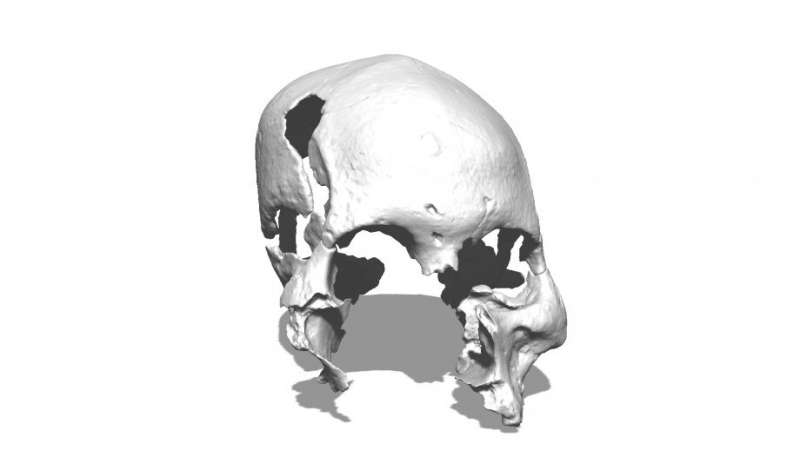Small skulls point to human migration highway to Australia

Human remains discovered on Alor island in Indonesia offer new insight into human migration through Southeast Asia thousands of years ago, say researchers from The Australian National University (ANU).
Lead researcher Dr. Sofía Samper Carro says the two skulls, dated between 12,000 and 17,000 years old, are the oldest human remains ever found in Wallacea—the islands between Java, Papua New Guinea and Australia.
"Although we were aware that modern humans were in Timor and Sulawesi over 40,000 years ago, these remains are the first fossil evidence of modern human presence in Wallacea," Dr. Samper Carro said.
"The area around Alor may have been a sort of 'highway', with people moving through these islands, and finally getting to Australia."
That wasn't the only exciting find.
"What is really interesting is the small size of their heads," Dr. Samper Carro said.
"The size seems to be similar to other remains found later in this region, dated to between 7,000—10,000 years old. This is potentially the result of a reduction in size after the first modern humans settled in these islands.
"This is different to what you find in Australia and other parts of mainland Southeast Asia during the same period, where, in general, humans have larger skulls."
Dr. Samper Carro says one possible explanation for this is the so-called "island effect"—the idea that when humans and other large mammals get to an island where there are not enough food resources and predators, they tend to get smaller, while small mammals will get bigger.
"It's been suggested this is what may've happened to Homo floresiensis (hobbit) and, potentially, it may have also affected the recently discovered Homo luzonensis," Dr. Samper Carro said.
A huge number of fish bones have also been found in the Tron Bon Lei site in Alor, which could offer some important clues.
"The question is, was that enough food for them?" Dr. Samper Carro said.
"The archaeological site show gaps which may indicate that, at some point, humans moved from the island, or they weren't using this particular site and they went somewhere else.
"This could be because of environmental changes, or because they didn't have enough food to survive. More excavations and research in Alor will help us to test these theories."
Dr. Samper Carro says these findings could build on long-held ideas about human migration.
"It's a really exciting time. Human evolution studies have been focused in Africa and Europe for a long time, but now more and more we seem to be getting new findings from Asia that are challenging our previous conceptions.
"There's been evidence found that Homo sapiens were around in North Africa and the Mediterranean earlier than we thought, coinciding with the presence of different hominins in other parts of the world. Human evolution is getting more exciting and complex."
One of the skulls discovered on Alor was found with fish hooks and ornaments. Dr. Samper Carro says burial traditions are also a good example of the mobility of humans and ideas.
"New people come with new traditions, just like we see now," she said.
"If you move somewhere, you bring your culture and traditions with you, and the next generation will continue some of those traditions. We can see that reflected in the way these people buried their loved ones."
The research has been published in the Journal of Human Evolution.
More information: Sofía C. Samper Carro et al. Somewhere beyond the sea: Human cranial remains from the Lesser Sunda Islands (Alor Island, Indonesia) provide insights on Late Pleistocene peopling of Island Southeast Asia, Journal of Human Evolution (2019). DOI: 10.1016/j.jhevol.2019.07.002
Journal information: Journal of Human Evolution
Provided by Australian National University




















